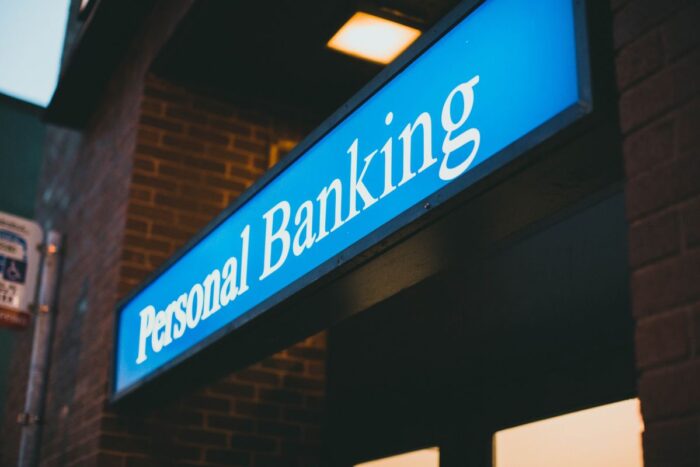Economy
Why did three US banks fail? And should Australia be worried?
Published
28 March, 2023

From commercial real estate investors to stock market players, banks are what keeps our financial system ticking over. So, should us Aussies be worried about what’s happening to US banks? Are their failures a concern for the health of ours?
Today, we’ll answer the most common questions regarding the failure of two of the bigger names in the sequence of collapses, Silicon Valley Bank and its far larger counterpart Credit Suisse. Importantly, we’ll show you what it means for Australians – for you – and whether the backside of your mattress is a safer deposit option than a bank.
Why are US banks collapsing?
, not just in Australia but in the US too. This isn’t news, it’s been happening for months. But the escalating cash rate of the United States has ruined a range of deals struck by their banks back when rates were much lower. That’s the high level: the economic value of those deals, which we’ll get to shortly, has dropped significantly.
But to understand fully what happened this month, even on a high-level, we need to first explain how banks actually work.
What banks actually do
Banks take in deposits, from both everyday customers like you and me and substantially sized businesses, like mining firms, corporations, science-based organisations… you name it. But it’s what the bank does with those deposits that most people don’t know about.
The bank actually lends some of that money out to borrowers, other everyday customers (like you and me). This means the banks need a constant source of capital – a large chunk from customer deposits – to sustain their all-important level of loans. But if too many of the bank’s customers withdraw (or in some cases, attempt to withdraw) their money, the bank might indeed be in trouble.
This is the banks’ typical business model. Using deposits to fund their loan products. It’s a game of assets (loans which are owed to the bank) and liabilities (deposits which the bank owes to you).
What happened to Silicon Valley Bank?

Silicon Valley Bank (SVB) took a considerable amount of deposits from venture-backed tech firms. A lot of these firms before and during the pandemic were throwing their money at the bank, because investors were investing hard into tech firms.
SVB used these deposits to buy sovereign bonds (loans to the government which the government has promised to repay – a usually very safe investment). Important to note is that these bond purchases were made before interest rates began rising, from 2015 to 2021. Meaning the bonds were purchased at very low interest rates.
But interest rates then went up.
And in the wake of rising interest rates, two colossal and eventually catastrophic things happened to SVB:
First, with such high cost of money, no investors wanted to give these tech firms new money. This forced tech firms to ask for their money back from Silicon Valley Bank, creating a very big liability in the bank’s balance sheet.
And second, those government bonds had lost a substantial amount of value all thanks to interest rate rises. The value of those bonds during the low interest rate environment were extremely high but plummeted when interest rates hiked. That was a huge, huge loss for SVB.
So, what did SVB do?
One major mistake SVB made from the beginning was leaving those customer deposits uninsured. A whopping 93.9-per cent of SVB’s deposits weren’t insured against losses, creating an incredible amount of volatility.
So, when things went south for the bank, they had only one option…
Silicon Valley Bank had to return the deposits to their tech fund customers. They were under obligation to do so, so couldn’t simply ask these firms to wait until interest rates returned to pre-2023 levels. To do so, they had to sell those low-value government bonds, and in the process took extremely heavy losses. So heavy that they then needed to ask the government to bail them out.
And Credit Suisse?
Silicon Valley Bank wasn’t the only bank to go belly up in March 2023. Credit Suisse soon followed, for their own reasons, and there’s now a panic about the strength of the globe’s banking institutions.

Credit Suisse is a goliath in the banking world. But out of their dozens of business departments, only a few of them made money. Outcompeted and outperformed by a range of other big investment banks – like JP Morgan, Citigroup, Barclays, etc – Credit Suisse failed in their attempt to play with the big boys in the cutthroat world of investment banking. This underperformance wasn’t hidden from the market; the investment banking knew of the Credit Suisse’s flaws.
And indeed, Credit Suisse was performing so poorly that they needed huge financial help, found in a takeover by their major competitor and fellow Swiss banking institution UBS.
Is there a connection between bank failures in the US and Australia’s future?
The cash rate in Australia has been rising since May 2022. The US’s has been rising since March 2022. So, we’ve seen the same economic trend… sort of.
One difference is that the US’s Federal Reserve interest rate was at zero per cent before the first series of rate rises last year. As of today’s writing, it now exceeds Australia’s cash rate by 1.40 per cent. The banks we’ve mentioned above had a seriously different environment to contend with from one year to the next, and it didn’t help that they’d made risky decisions (i.e. holding uninsured deposits; continuing underperforming business activities).
Another difference is that Australia’s banking sector is not just strong… it is rich. Banks in Oz have huge capital and liquidity buffers, meaning they can return customers’ deposits quickly and without concern. Even still, regulators are promising an intense supervision of Australia’s financial system as a result of the SVB collapse. It’s just how low-risk our banking institution is. Far less risky than the US’s.
There’s talk of another GFC… Could another be on the way?

There’s no indication that any big bank – on either Australian or US soil – have the same kinds of issues that either Silicon Valley Bank or Credit Suisse had. Nor do banks have remotely the same environmental problems as they did in 2008.
In 2008/09, there was nowhere “good” to put your money. Every bank was affected by the Global Financial Crisis, including Australia’s (Google Westpac and NAB secret bailout to learn more). But a lot has changed in the way banks operate, literally because of the global financial crash.
By the way… did you know Australia’s property market rose 7.50% during the Global Financial Crisis? Here’s why.
Governments and banks learned a lot of good lessons after the GFC and the special rules ensuring huge backstops of money has kept our banking system in an incomparable position in 2023 than the dark days of 2008 and 2009. Banks here in Australia are stronger, wiser and richer than ever before.
We don’t hold a crystal ball but worrying about a banking collapse because of the events with Credit Suisse and SVB is like worrying about being struck by lightning in Australia because there was a flood somewhere in Asia. It just doesn’t really make sense.
As any smart, passive investor will tell you, it pays to be cautious. We find the most cautious investment is in Australian commercial real estate. Considered investing? We offer defensive income streams and stable yields in commercial property syndicates. Get in touch with us for all the info you need to join us.
Want more Australian commercial real estate news and economic updates? Subscribe to our newsletter.




